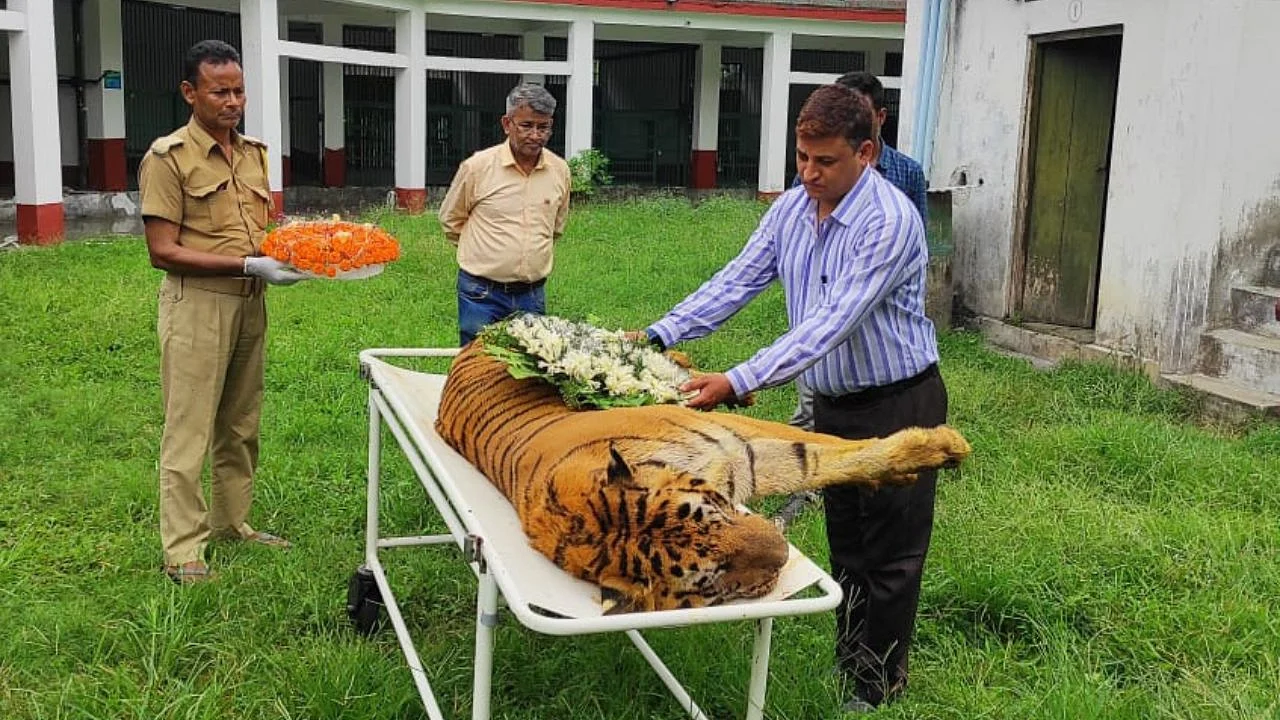- Know Everything About Nipah Virus, Which Is Back In Kerala Again
- Kevin Porter Jr Arrested On His Girlfriend’s Assault Charge
- Market Change Overnight - Know The 8 Things That Did It
- Who Are Alba Baptista And Chris Evans Married On The Weekend?
- Disrupted India vs Pakistan Asia Cup 2023 Match on Reserve Day
- 10 Common Foods That Contain No Calories or Are Very Low in Calories
- Men’s Styling Tips - Know the 9 Common Style Mistakes to Avoid
- Coco Gauff Beats Karoline Muchova and Reaches the US Open Final
- Danny Masterson Gets Life Sentence of 30 Years for Two Rapes
- Experience A Splendid Vacation in Kashmir with These 15 Gorgeous Sights
- India
- Sunday , May 05, 2024
- Last Published Sep 12, 2023, 6:48:32 PM

India’s Pride And World’s Oldest Royal Bengal Tiger ‘Raja’ No More!
Raja, the oldest Royal Bengal Tiger, died at 3 am today at 25 years and 10 months. Everyone is sympathizing for the oldest living tiger death at the South Khairbari rescue centre in West Bengal. Bhupender Yadav, Union Minister for Environment and P C Mohan, Karnataka MP, sympathized with the death of the Royal Bengal Tiger. Tiger and wildlife lovers have taken to the internet to grieve the loss of Raja. “Saddened to know that Raja, the oldest living tiger in the world in captivity, is no more. As the pride of India that lived for over 25 years, Raja will be sorely missed,” Bhupender Yadav tweeted. https://twitter.com/byadavbjp/status/1546466667156279296 PC Mohan, Karnataka MP representing Bengaluru Central, said Raja’s longevity is rare. “#Raja, one of the oldest Royal Bengal Tiger in captivity, breathed his last. As against the normal life span of 18 years for tigers, Raja lived for 25 years. His longevity is rare. Raja is the pride of India. His presence will be sorely missed,” Mohan tweeted. Surendra Kumar Meena of the Directorate of Forests in Jaldapara shared a video of him paying honour to Raja. Indian Forest Service Officer Parveen Kaswan wrote on Twitter that Raja was saved from a crocodile attack and transferred to the rescue centre. “Today ‘Raja’, the oldest living tiger in captivity, is no more. He died at the age of 25 years and 10 months. Raja was in the rescue centre of Jaldapara for many years. After a crocodile attack. Was saved & later became the oldest tiger in the world in captivity,” Kaswan tweeted. https://twitter.com/ANI/status/1546477868230000640 https://twitter.com/ANI/status/1546460686255292416












